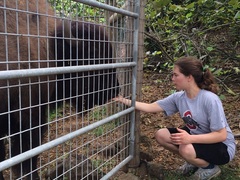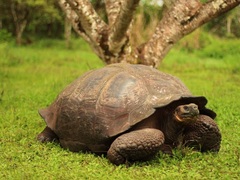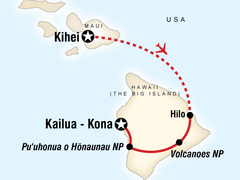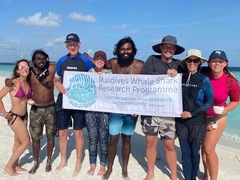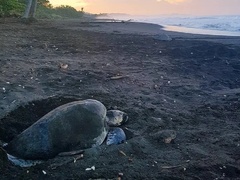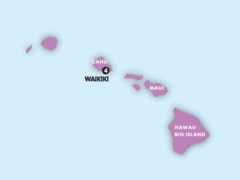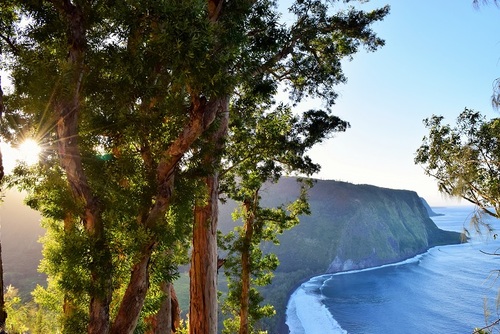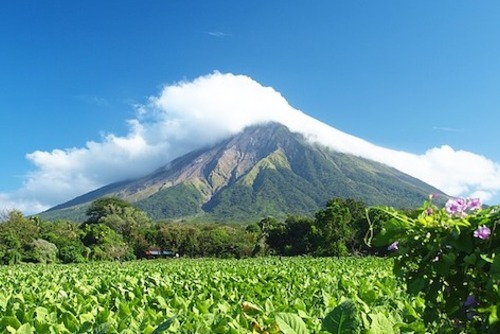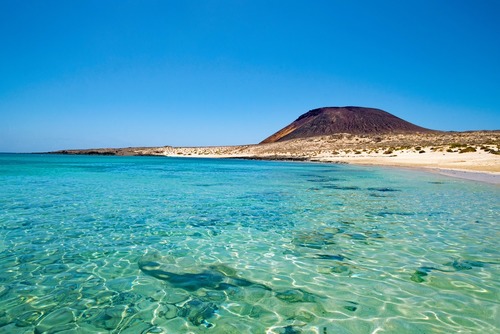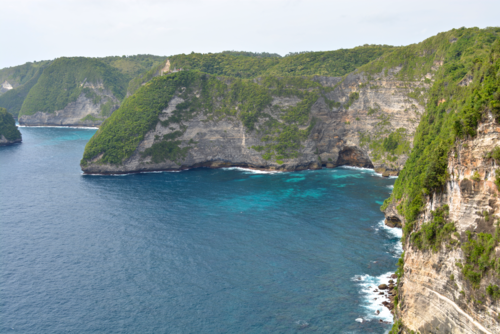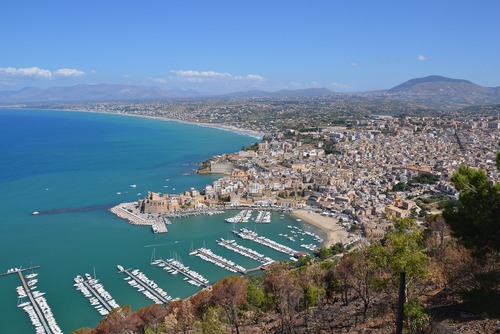Dozens of volunteers contribute thousands of hours each year to help HVO's staff monitor the active volcanoes of Hawai`i and conduct research on various aspects of Hawaiian volcanism. The volunteers in turn gain experience working on active volcanoes and participating in scientific research--collecting and analyzing data, building and installing instruments for experiments and volcano and earthquake monitoring, taking photographs and conducting surveys, and working on team or individual research projects.
Volunteers help install a tiltmeter into a hole about 3 m deep Volunteers range from undergraduate students to retired educators, computer programmers to chemists, and writers to electricians. People come from around the world to volunteer or work at HVO. Hawai`i's active volcanoes and natural beauty make the volunteer positions very popular and highly competitive.
If you are not a citizen of the United States the USGS Exchange Visitor Program will enable you to collaborate and work with USGS scientists, similar to volunteers.
HVO provides free lodging for as many as 7 volunteers at a time in a fully-furnished house about 4 km from the Observatory. Volunteers staying in our guest house must be willing to work for at least three months on a full-time basis. Transportation is provided between the house and HVO, but volunteers are responsible for all non-work-related travel expenses (travel to and from Hilo, Hawai`i, and travel on the Big Island and neighboring islands). Volunteers are also responsible for all food and health-care costs.
Volunteer conducts a VLF (very-low frequency) survey over a lava tubeMany of the volunteer positions require work in the field, sometimes in remote areas of Hawai`i Volcanoes National Park and other parts of the Big Island. For these positions, volunteers often must hike several kilometers over rough and irregular ground in hot, humid conditions, or sometimes in raw, bone-chilling cold and wet weather high on the volcanoes. Also, some of the field sites are near active fumaroles, and many sites are intermittently swept by the plume of sulfur dioxide gas from the Pu`u `O`o vent--the noxious plume poses a health hazard by aggravating preexisting respiratory ailments (for more information about the plume, see Volcanic air pollution--a hazard in Hawai`i).
USGS Hawaiian Volcano Observatory (HVO)
Activities: Community Volunteer Projects / Conservation Volunteer Projects
Countries: United States / Worldwide
Countries: United States / Worldwide
Volunteer Program of the USGS Hawaiian Volcano Observatory (HVO)
Update Listing
Apply to update this profile.
Learn more about advertising opportunities or contact us for details.
USGS Hawaiian Volcano Observatory (HVO) Reviews

Related Opportunities
Costa Rica Adventure
- TruTravels
- Costa Rica
- 1 week to 2 weeks
- 500 to 1000 £ Pound (UK)
Exotic Animal Sanctuary (Hawaii)
- Fronteering
- Hawaii, USA
- 4 weeks to 2 months
- 3000+ to 3000+ $ Dollars (US)
Family Volunteer Projects in Ecuador & Galapagos Islands
- LEAD Adventures South America
- Multiple Destinations
- < 1 week to 6 weeks
- 1000 to 3000+ $ Dollars (US)
Hawaii Highlights
- Topdeck Travel
- United States
- 1 week to 1 week
- 1500 to 1500 £ Pound (UK)
Hightlights of Hawaii – Maui & Big Island
- G Adventures
- United States
- 1 week to 2 weeks
- 2000 to 2000 £ Pound (UK)
Maldives Marine Life Volunteer Program
- Secret Paradise Maldives
- Ari Atoll
- < 1 week to 4 weeks
- 1750 to 2500 $ Dollars (US)
Sea Turtle Conservation Project in Central America
- The Global Work & Travel Co.
- Costa Rica
- 2 weeks to 3 months
- 1500 to 1500 £ Pound (UK)
Waikiki Explorer (2 nights)
- Contiki
- Hawaii
- < 1 week to 1 week
- 100 to 250 £ Pound (UK)
Related Articles
6 Reasons to Visit Hawaii in Winter
Oh winter. Cold, snow, ice. Beautiful colors, but…cold.
08/03/2016
Nicaragua Travel, Backpacking & Gap Year Guide
Nicaragua is a really up and coming destination with friendly local people and a stunning coastline. View our compreh...
09/01/2010
5 Best Places to Visit in Lanzarote
The Canary Islands off the north-western coast of Africa are a volcanic chain stemming, many geologists believe, from...
30/05/2013
Top 5 Reasons to SCUBA Dive in Indonesia
Indonesia is a country that spans the entire length of Southeast Asia and more, coming to rest above Australia and ag...
17/02/2017
Discover Beaches, Volcanoes, & Ancient Wonders in Sicily
There are few travel destinations as beautiful and distinctive as Sicily.
17/12/2024



